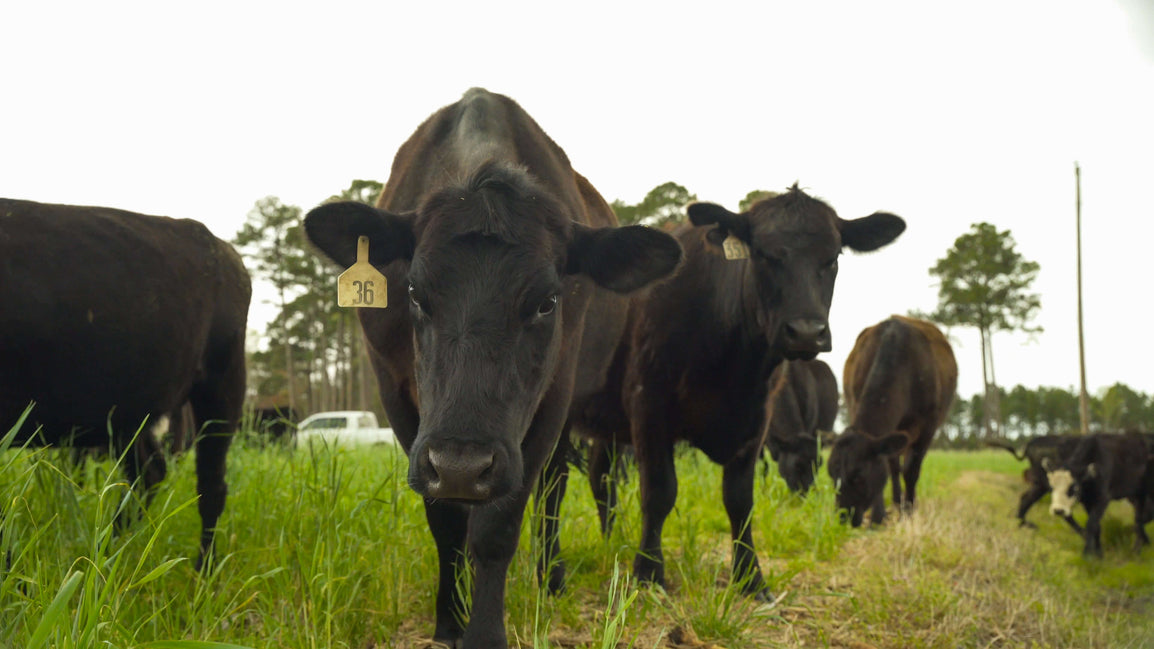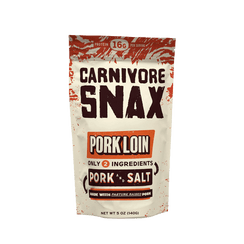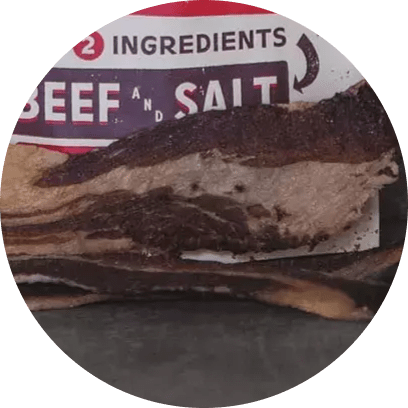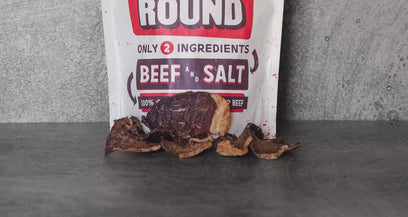THE CARNIVORE DIET BENEFITS





From sprawling fields to the humble backyard garden, agriculture is an integral part of our lives and the larger ecosystem. One element that stands at the heart of this complex system is fertilizer - the lifeblood of plant nutrition.
As we journey into the realm of regenerative agriculture, an approach that strives to replenish the land rather than deplete it, you might find yourself asking - does regenerative agriculture use fertilizer?
The answer, like the farming process itself, isn't quite as black and white as you might think. That’s why we’ve taken it upon ourselves to pull the curtain back and help you gain a crystal clear understanding of the role regenerative agriculture fertilizer plays in restoring our lands.
Below, we’ll explore the intriguing world of regenerative agriculture and its unique approach to fertilizer use. We delve into comparisons with conventional farming methods, impacts on crop yield and quality, and the wider implications of these practices. We'll also shed light on how your choices can influence the future of farming.
Are you ready to dig a little deeper? Grab your metaphorical spade and join us as we unearth the truth about regenerative agriculture fertilizer. It's a journey of discovery that could redefine how you view your food, the environment, and our collective agricultural future.
Does Regenerative Agriculture Use Fertilizer?
A question often asked about regenerative agriculture is whether it uses fertilizers, especially given its focus on sustainability and minimal interference with nature. After all, this approach to farming does away with many of the commercial tactics farms use today - is fertilizer another example of this at play?
The answer is yes - regenerative farming DOES use fertilizer. However, it’s not in the way that you might be accustomed to in traditional farming practices. Let's dive into the details to better understand this topic.
Defining Regenerative Agriculture: a Quick Refresher
First things first…what is regenerative agriculture? This is a holistic farming approach aimed at improving the resources it uses, rather than exhausting them.
Regenerative agriculture operates under a core principle: farming practices should “do no harm” and should aim to improve the environment. This involves implementing practices that restore soil health, increase biodiversity, improve water cycles, enhance ecosystem services, and strengthen the health and vitality of farming communities.
You can learn more about the various regenerative farming techniques in our blog, as we have a complete guide on how to do regenerative agriculture. But, let’s narrow our focus to the topic at hand today: the role of regenerative agriculture fertilizer.
Understanding the Role of Fertilizers in Any Form of Agriculture
To those with no background in farming, it may appear that plants don’t need much to grow. Water, sunlight, and a bit of TLC are all it takes to bring a crop to harvest, right?
Wrong. The truth of the matter is that agriculture is a blend of art and science, with many interworkings at play that result in the final product. Fertilizers are one of these.
Fertilizers are critical in any form of agriculture because they supply the nutrients that crops need to grow. In traditional agriculture, synthetic fertilizers are often used to provide the essential nutrients nitrogen, phosphorus, and potassium, commonly referred to as NPK.
However, overuse of these synthetic fertilizers can lead to a host of environmental problems, such as soil degradation, water pollution, and the disruption of natural ecosystems. While these solutions are cost-effective and easy to use, they don’t meet the criteria for what can be used on a regenerative farm. And that’s where a more natural approach to plant food shines…
Natural Fertilizers and Their Function in Regenerative Agriculture
In contrast, regenerative agriculture favors natural sources of fertilizers that restore and enhance soil health over time. These can be in the form of compost, green manures, bone meal, or other organic material.
This approach ensures that nutrients are slowly released into the soil as they break down, reducing the risk of nutrient runoff into nearby water sources. Furthermore, these organic materials help improve soil structure and promote the presence of beneficial microorganisms.
Natural fertilizers play a vital role in the cycle of regenerative agriculture, transforming the way nutrients are added to the soil. While it may be more labor-intensive and require a deeper understanding of soil health and ecology, the benefits are immense, leading to more resilient farms that can withstand climatic shocks and stresses.
So, the answer to our initial question is a nuanced one. Yes, regenerative agriculture does use fertilizers, but they differ significantly from those found in conventional agriculture. In the following sections, we'll delve deeper into these differences and explore how they impact both the health of the farm and the quality of its produce.
The Difference Between Regenerative Agriculture Fertilizer and Commercial Agriculture Fertilizer
The comparison between regenerative agriculture and commercial farming can be summed up in a single phrase: working with nature versus trying to control it. This principle extends to how each method approaches fertilization.
Rather than trying to create plant food in a lab, regenerative farmers use the land’s very own inputs to fuel their crops. Before we talk about regenerative agriculture fertilizer, though, we need to unpack the other side of the coin: traditional commercial agriculture fertilizer.
A Brief Overview of Traditional Commercial Agriculture Fertilizer
In conventional commercial agriculture, synthetic fertilizers are the norm. These fertilizers, made from various chemical compounds, deliver a high concentration of nutrients directly to crops. While this approach can accelerate growth and increase yields in the short term, it can lead to long-term soil degradation.
This is because the repeated application of synthetic fertilizers can disrupt the natural balance of soil nutrients and lead to soil acidification, depleting its organic matter and decreasing its fertility over time.
Furthermore, synthetic fertilizers don't aid in the development of soil structure or stimulate microbial activity - two key components that contribute to the health and resilience of soil ecosystems
How Regenerative Agriculture Fertilizer Diverges from Traditional Practices
Regenerative agriculture, on the other hand, emphasizes the use of organic, natural sources of nutrients. These come in the form of compost, animal manures, cover crops, and crop rotations, among others. These natural fertilizers not only provide nutrients to crops, but also contribute to building healthier soils.
Compared to synthetic fertilizers, organic fertilizers release nutrients more slowly. This gradual release of nutrients is more in sync with plant needs and reduces the risk of nutrient leaching. Additionally, these organic inputs help build soil organic matter, improving soil structure, water holding capacity, and biodiversity, particularly in terms of beneficial soil microorganisms.
Environmental Implications: Chemicals and Carbon Footprint
The environmental implications of the two farming methods are profound. The manufacture and use of synthetic fertilizers in traditional agriculture is energy-intensive, contributing significantly to greenhouse gas emissions. Moreover, as we've mentioned before, the use of these fertilizers can lead to nutrient runoff and the consequent degradation of aquatic ecosystems.
In contrast, regenerative agriculture aims to minimize environmental harm. Organic fertilizers not only feed the plants but also nurture the soil and its microorganisms, leading to healthy and sustainable ecosystems. Importantly, these practices also contribute to carbon sequestration. Healthy soils rich in organic matter are excellent at storing carbon, thereby helping to restore our lands.
In the next section, we will delve into whether the use of different types of fertilizer affects crop yields or quality. This information will help you understand why these farming practices matter and how they impact the food we consume.
Are Yields or Crop Quality Affected by Variances in Fertilizer?
With our understanding of the differences in fertilizer practices between regenerative and commercial agriculture, a natural question that arises is, how do these differences affect crop yield and quality?
After all, all of the benefits of regenerative farming sound good in theory - but they must be practically sound, too. If these changes come at the cost of yield and crop quality, profits will suffer - and the longevity of regenerative farms will be on the line. Let's take a closer look.
The Impact of Regenerative Fertilizer Practices on Crop Yield
Traditionally, synthetic fertilizers have been favored for their ability to significantly boost crop yields. The instant availability of key nutrients often leads to quick, lush growth. However, the over-reliance on these fertilizers can lead to the degradation of soil health over time, which can eventually decrease yields.
In contrast, regenerative agriculture focuses on long-term soil health. The yields in regenerative farming systems might not match those of conventional systems initially. This is because it takes time for the soil to rebuild its organic matter and for the microbial community to thrive.
However, as the soil health improves over time, farms practicing regenerative agriculture can see stable and even competitive yields. In fact, in scenarios of unfavorable weather conditions like droughts, regenerative farms often outperform conventional ones, due to the improved water-holding capacity of healthier soils.
How Crop Quality Is Affected by Fertilizer Practices in Regenerative Agriculture
When it comes to crop quality, regenerative agriculture takes the upper hand. Healthier soils produce healthier, more nutrient-dense crops. Plants grown in soil that has a balanced, diverse range of nutrients have been found to contain higher levels of vitamins and minerals.
In addition, regenerative farming practices can lead to crops having better flavor and longer shelf life. This is due to the robust health of the plants and their improved resistance to diseases and pests.
The Profitability of Using Natural Fertilizers Over Their Synthetic Counterparts
At the end of the day, most decisions in farming are made on profits. So, how does the cost of regenerative fertilizer compare to its traditional counterpart? Transitioning from synthetic to natural fertilizers in regenerative agriculture may initially seem costly. However, considering the long-term economic benefits, it becomes a worthwhile investment.
While the shift incurs upfront costs such as acquiring organic materials or altering farming techniques, these are often offset by decreased input costs over time. Natural fertilizers like compost or animal manure can be cost-effective alternatives to expensive synthetic ones.
And, with growing consumer demand for environmentally friendly food, regenerative agriculture taps into premium markets, further boosting profitability.
You can learn more about regenerative farming profits in our blog if you’d like. But now, we want to ask another question…why is regenerative farming important in the first place? Why does all this matter?
Why Does All This Matter?
When it comes to discussing fertilizer practices in agriculture, it isn't merely a question of crop yield or farming economics. The matter has far-reaching implications that impact our environment, health, local economies, food security, and biodiversity.
The Larger Implications for the Environment and Health
A major concern with synthetic fertilizers lies in their environmental footprint. Their production and use release significant amounts of greenhouse gases that can harm our lands. Moreover, runoff from these fertilizers contaminates water sources, causing algal blooms that harm aquatic life.
On the health front, food grown using synthetic fertilizers can contain traces of harmful chemicals. By contrast, food from regenerative agriculture tends to be free from such residues, making it a healthier choice.
The Impact on Local Economies and Small-Scale Farming
By adopting regenerative practices and natural fertilizers, small-scale farmers can cut down on input costs, improving their financial stability. Moreover, as regenerative agriculture enhances soil health, these farmers can yield more productive and resilient crops over time, bolstering their economic status.
Plus, farmers who implement regenerative tactics live healthier, happier lives themselves. The end result is not just better for our lands or the end user, but the individuals who put that food on our plates too!
Supporting Food Security and Biodiversity
Lastly, the shift to natural fertilizers and regenerative agriculture supports food security and biodiversity. It nurtures a variety of microorganisms that contribute to soil health, promoting diverse, healthy ecosystems. This diversity not only boosts the resilience of farms but also contributes to overall food security.
How to Show Your Support for the Future of Farming Today
Upon discovering the benefits of regenerative agriculture - specifically, the omission of harmful synthetic fertilizers and the use of a more natural, safe alternative - you may be wondering how you can show your support for this method. And, it’s easier than you may think.
A good starting point is educating yourself further. Our blog offers a treasure trove of resources to help guide you through the ins and outs of regenerative ag.
You can learn about the history of regenerative agriculture, regenerative cattle farming, or how regenerative agriculture sequesters carbon. That being said, we’ll offer three concrete ways to support regenerative farming below.
Buying Locally and Supporting Regenerative Agriculture
One of the most effective ways to show your support is by purchasing locally grown, regenerative produce.
Not only does this help reduce carbon emissions associated with long-distance transportation of food, but it also directly supports farmers who are choosing to use environmentally-friendly practices.
Be sure to check for labels that indicate the produce is grown using regenerative methods. If you’re unable to support these farms directly due to your location, your next best option is to shop with brands who do…
The Role of Companies like Carnivore Snax in Promoting Regenerative Practices
At Carnivore Snax, we’ve made it our mission to empower individuals everywhere to live healthier lives without driving themselves crazy with the typical, boring low-carb snacks. So, we’ve developed our own line of meat snacks that contain just two ingredients: meat and salt. And, they literally melt in your mouth and offer a cornucopia of flavor that will have you coming back for more.
The best part, though? Our meat chips are 100% regeneratively raised. That means you can support regenerative farming from afar while treating yourself to the best carnivore snacks on the market. With ribeye chips, steak chips, lamb chips, beef chips, brisket chips, chicken chips, and even pork chips, you’ll never get bored again. And, you’re doing your part to shift our food supply chain in the first direction. Get yours today!
Participating in Community Agriculture Programs and Initiatives
Another way to get involved is by participating in local community agriculture programs. This might include volunteering at a community garden, participating in a community-supported agriculture (CSA) program, or even advocating for local policies that support regenerative practices.
Do what you can to make your voice heard - and eventually, the case for regenerative farming will be too strong to ignore!
Final Thoughts on Regenerative Agriculture Fertilizer
From understanding the crucial role of natural fertilizers in regenerative agriculture to recognizing the differences between regenerative and commercial farming practices, we've covered a lot of ground. It's clear that the way we grow our food, and specifically the fertilizers we use, can have profound impacts on our environment, health, and local economies.
While it can seem overwhelming, it's empowering to realize that every choice we make about what we eat and where we source our food can be a step towards supporting these vital regenerative practices. By choosing to buy local, support regenerative farmers, and advocate for sustainable agriculture, we can help foster a healthier planet and a healthier future.
At Carnivore Snax, we're proud to be part of this movement. We hope this deep dive into regenerative agriculture fertilizer has provided you with insights and actionable steps you can take to join us in supporting a more sustainable future - starting with our world-renowned carnivore chips.
Every bite counts, and together, we can make a real difference. Here's to a greener, more regenerative world!























